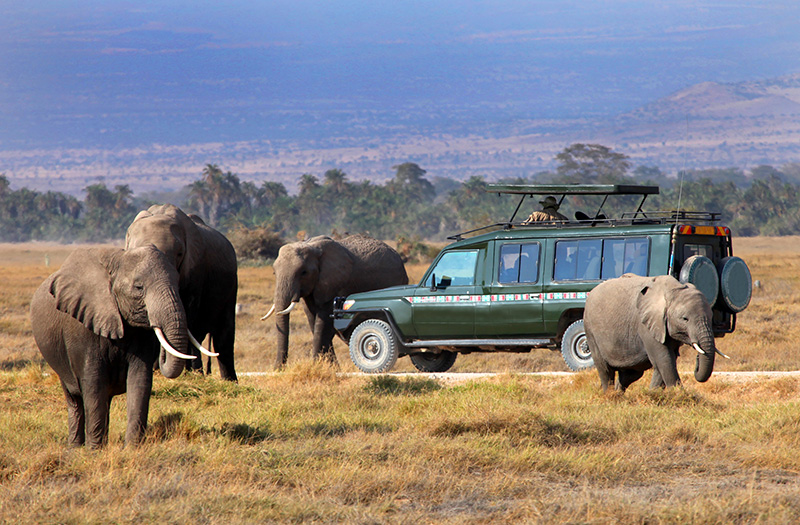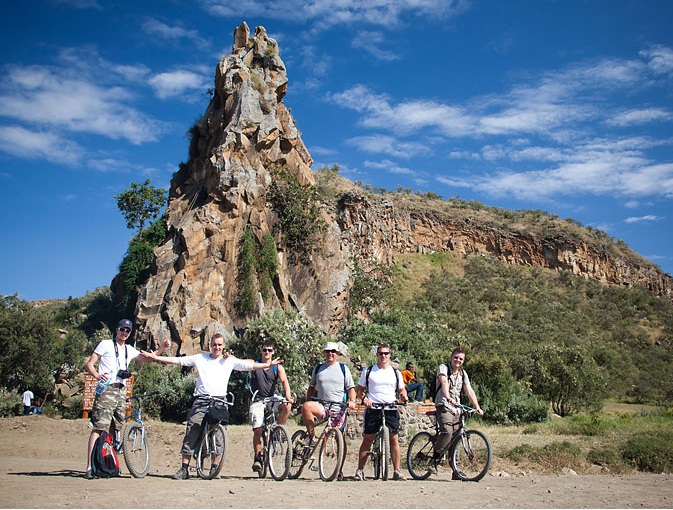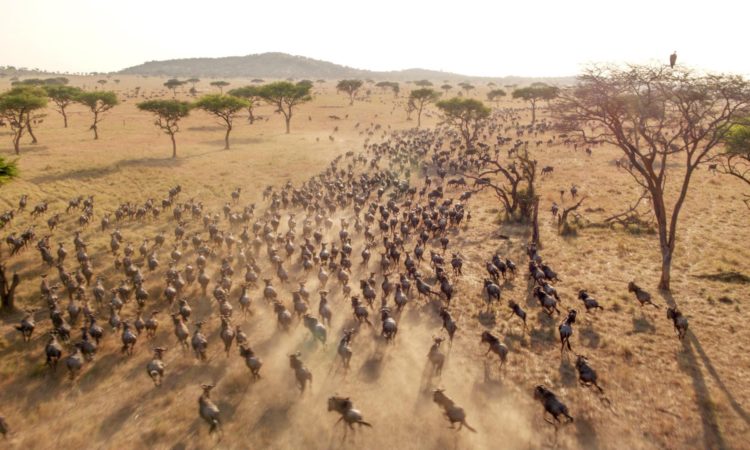If you are a wildlife lover, you might have heard of the Masai Mara National Reserve in Kenya. It is one of the most famous and diverse wildlife destinations in the world, home to the Big Five and many other amazing animals. But among all the wildlife species, there is one that stands out: the lion. The Masai Mara lions are some of the most majestic and fascinating creatures on the planet, and they are a must-see for anyone visiting the reserve. Masai Mara Holidays, a reputable safari operator in the Masai Mara, we will tell you everything you need to know about lions in Masai Mara, from their population and distribution to their behavior and conservation. We will also give you some tips on how to observe them responsibly and enjoyably.
Introduction to the Masai Mara
The Masai Mara National Reserve is a large protected area in southwestern Kenya, covering about 1,510 square kilometers. It is part of the Greater Mara Ecosystem, which also includes several adjacent conservancies and community lands. The reserve is named after the Maasai people, the traditional inhabitants of the area, who still live in harmony with nature and practice their pastoral culture.
The Masai Mara is famous for its spectacular scenery, which includes rolling grasslands, acacia woodlands, riverine forests, and rocky hills. It is also renowned for its abundant and diverse wildlife, which includes over 95 mammal species and over 570 bird species. Some of the most iconic animals that can be seen in the reserve are elephants, rhinos, buffalos, leopards, cheetahs, giraffes, zebras, wildebeests, antelopes, hyenas, jackals, crocodiles, hippos, and of course, lions.

The Masai Mara is also the stage for one of the most incredible natural phenomena in the world: the Great Migration. Every year, between July and October, millions of wildebeests, zebras, and gazelles migrate from the Serengeti National Park in Tanzania to the Masai Mara in search of fresh grass and water. This massive movement of animals attracts thousands of predators, especially lions, who take advantage of the abundant prey. The Great Migration is a thrilling spectacle that attracts many visitors from all over the world.
Lion Population in the Masai Mara
The Masai Mara is one of the best places in Africa to see lions in their natural habitat. It is estimated that there are close to 850 to 900 lions in the Masai Mara National Reserve and surrounding conservancies . This makes it one of the highest lion densities in Africa, with about one lion per two square kilometers.
Lion Prides in the Masai Mara
The lions in Masai Mara are distributed across different territories, each occupied by a pride. A pride is a group of lions that live and hunt together, usually consisting of one or more males, several females, and their offspring. The size and composition of a pride can vary depending on factors such as food availability, competition, and social dynamics.

Some of the most famous and well-studied lion prides in Masai Mara are:
- The Marsh Pride: This is one of the oldest and largest prides in Masai Mara, with about 30 members. It occupies a territory of about 40 square kilometers around the Musiara Marsh area. The Marsh Pride gained international recognition through the BBC’s “Big Cat Diary” series
- The Paradise Pride: This pride consists of about 20 lions that live near the Mara River crossings. It is known for its hunting prowess and its frequent clashes with other predators such as hyenas and crocodiles.
- The Ridge Pride: This pride has about 15 lions that inhabit a territory along a ridge near Ol Kiombo airstrip. It is notable for having several unusually large males with impressive manes.
- The Sausage Tree Pride: This pride has about 10 lions that reside near a large sausage tree on the banks of the Mara River. It is led by three brothers who are known for their bravery and strength.
- The Bila Shaka Pride: This pride has about six young males who are trying to establish themselves in Masai Mara. They are often seen roaming around different areas and mating with females from other prides.
Lion Behavior and Social Structure in the Masai Mara
Lions are the most social of all big cats. They have a complex social structure that is based on cooperation and communication. They use various vocalizations, body postures, facial expressions, and scents to convey information and emotions to each other.
The social organization of lions is based on prides. A pride usually consists of one or more males, several females, and their offspring. The males are responsible for defending the territory and the pride from intruders, while the females are responsible for hunting and caring for the cubs. The males and females have different roles, but they also cooperate and share food and resources.
The males in a pride are usually related, either brothers or cousins. They form coalitions to increase their chances of taking over a territory and mating with females. The males in a coalition may have different ranks, depending on their age, size, and personality. The dominant male usually has the first access to food and females, while the subordinate males may have to wait or look for other opportunities.

Male lion coalitions in Masai Mara are formed in quite a few different ways; generally, the more traditional coalition as observed in The Mara is formed when a group of young males around the same age but not necessarily always the same age leave their mother’s pride together. The other way coalition is formed in Masai Mara is when unrelated males with separate prides run together to have a greater chance of taking over a better territory as they get older.
The first three male coalitions of the Mara located in the Mara triangle are the; sausage tree pride, the in gamma pride, and the musketeer pride. These coalitions operate both sides of the Mara river and are usually seen crossing the Mara river (wildebeest crossing) at various stages, the Musketeers hold one of the core territories in the Mara around the main crossings and for the moment they only have the Paradise pride and the maguro prides down with them.
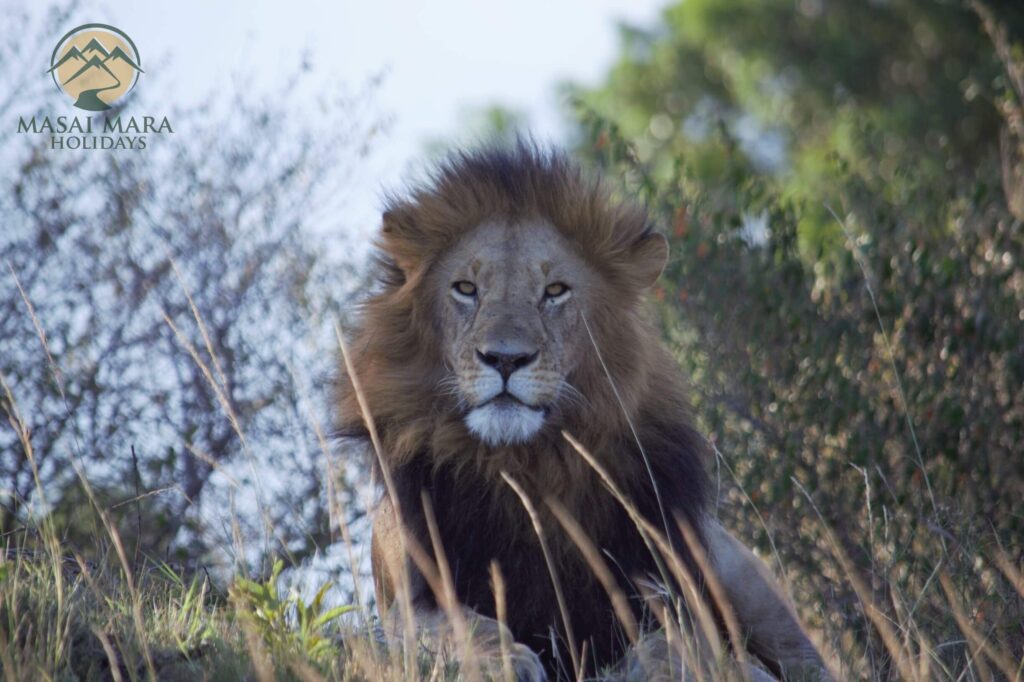
There are also three male coalitions of the Black Rock boys, the Black Rock boys had a one-eyed completely grizzled male (Scarface) that was very famous but passed on, they have multiple prides that they lured over to include the Black Rock pride. Within the same region, there are six young interlopers who moved into the area named the Billa Shaka nomads. The Billa shaka nomads are very interesting because they haven’t quite established themselves yet but have been seen mating with Yaya and her daughters who are formerly of the Marsh pride.
The females in a pride are usually related, either sisters or mothers and daughters. They form strong bonds with each other and help each other in hunting, raising cubs, and defending the pride. The females are loyal to their pride and rarely leave it, unless they are forced by circumstances such as food scarcity or male aggression.
The cubs in a pride are the offspring of the males and females in the group. They are born in litters of one to six cubs, after a gestation period of about three and a half months. The cubs are born blind and helpless, and depend on their mothers for milk and protection. The cubs are weaned between seven to eight months old, but they stay with their mothers until they are about two years old. The cubs are also cared for by other females in the pride, who may allo-suckle them or babysit them. The cubs learn from their elders how to hunt, communicate, and survive in the wild.
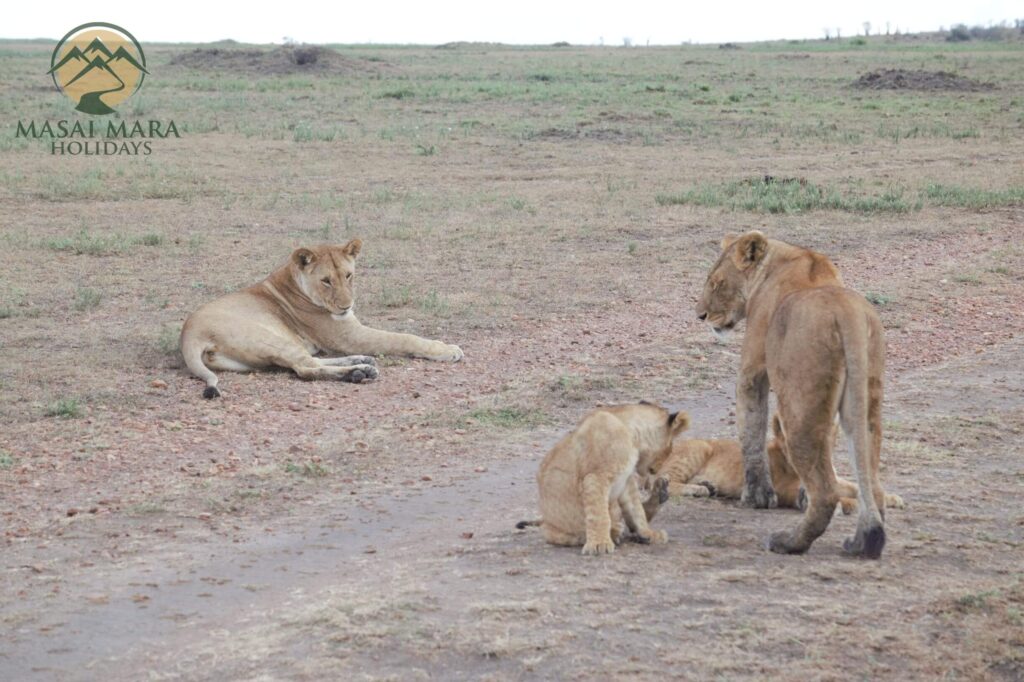
Lions are mainly active at night, when they hunt and patrol their territory. During the day, they rest and sleep for about 20 hours, usually under the shade of trees or bushes. They may also groom each other, play with each other, or socialize with other members of the pride.
Lions hunt mainly by ambush, using their stealth, speed, and strength to catch their prey. They prefer large ungulates such as wildebeests, zebras, and buffalos, but they may also take smaller animals such as warthogs, impalas, or hares. They may hunt alone or in groups, depending on the size and availability of prey. They use teamwork and coordination to increase their success rate. They communicate with each other using visual cues such as head movements or tail flicks.
Lions have a high metabolism and need to eat frequently. An adult lion can consume up to 15% of its body weight in one meal. After a successful hunt, lions share their kill with other members of the pride. However, there is often competition and aggression over food, especially among males. The dominant male usually eats first, followed by the subordinate males, then the females, and finally the cubs.
Lion Conservation Efforts
Lions are classified as vulnerable by the International Union for Conservation of Nature (IUCN), due to their declining population and habitat loss. It is estimated that there are only about 20,000 lions left in Africa, down from about 200,000 a century ago. The main threats to lions are:
- Habitat loss: Lions have lost about 80% of their historic range due to human expansion and land conversion for agriculture, livestock grazing, mining, and infrastructure development.
- Poaching: Lions are killed by poachers for their body parts such as bones, teeth, claws, and skins, which are used for traditional medicine or trophy hunting.
- Human-wildlife conflict: Lions often come into conflict with humans who live near their habitats. Lions may prey on livestock or attack people who pose a threat to them or their cubs. In retaliation, humans may kill lions using snares, poison, or guns.
- Disease: Lions are susceptible to diseases such as canine distemper virus (CDV), feline immunodeficiency virus (FIV), bovine tuberculosis (BTB), and anthrax. These diseases can affect their health and survival.
To protect lions from these threats, there are several conservation initiatives and organizations working in Masai Mara and beyond. Some of these are:
- The Mara Predator Conservation Programme (MPCP): This is a project that aims to monitor and conserve lions and other predators in Masai Mara through research, education, and community engagement. MPCP conducts long-term studies on lion ecology, behavior, and genetics, and uses GPS collars to track their movements and health. MPCP also works with local communities to raise awareness about lion conservation,
reduce human-wildlife conflict, and promote coexistence. - The Mara Lion Project (MLP): This is a project that focuses on lion population dynamics, genetics, and health in Masai Mara. MLP uses camera traps, biopsy darts, and whisker spot patterns to identify individual lions and estimate their numbers and distribution.
Lion Prey and Hunting in the Masai Mara
In the Masai Mara, lions primarily target herbivores such as wildebeests, zebras, and buffalos. During the annual wildebeest migration, lions have abundant prey opportunities as thousands of wildebeests cross the Mara River. Lions employ a combination of stealth, teamwork, and sheer strength during hunts. They often use tall grass or terrain features for cover and coordinate their movements to encircle and ambush their prey. Teamwork is crucial for successful hunts, as lions work together to bring down large and agile animals.
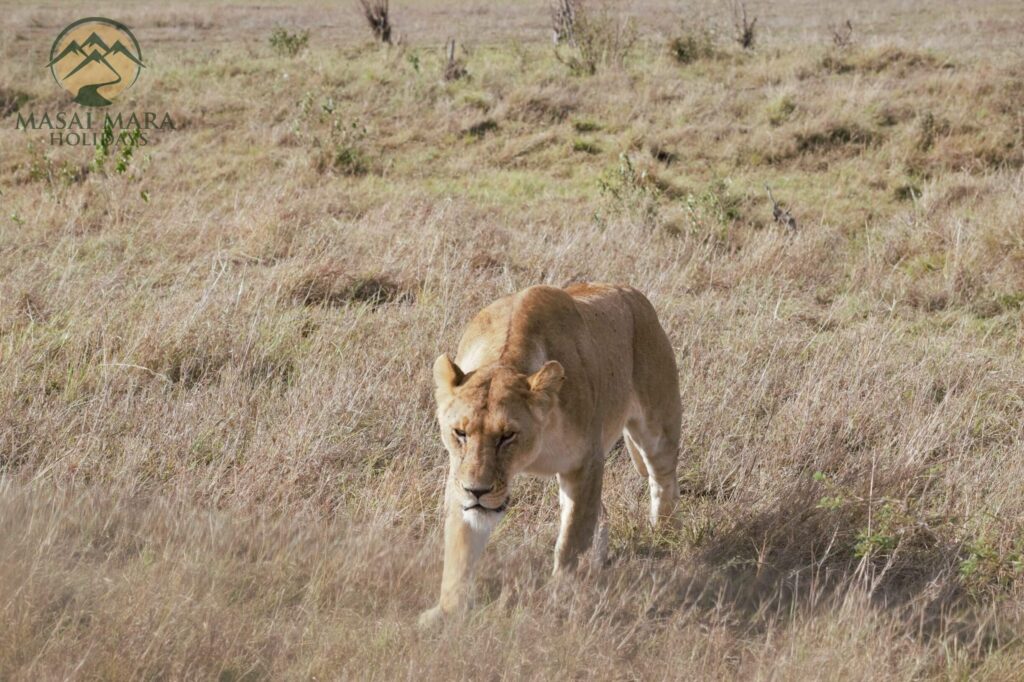
Lion Interaction with Other Wildlife in the Maasai Mara
The Masai Mara is a diverse ecosystem, and lions interact with various other wildlife species. They often come into conflict with hyenas, as both species compete for food and territory. Cheetahs, although not direct competitors, can occasionally steal lion kills. Lions sometimes encounter elephants, and interestingly, elephants have been observed displaying a certain level of caution and respect towards lions. These interactions between different species add to the complexity and richness of the ecosystem.
Lion Research and Tracking
Ongoing research projects in the Masai Mara focus on understanding lion behavior, population dynamics, and conservation strategies. Researchers employ various techniques for tracking and monitoring lions, including radio collaring, camera traps, and genetic analysis. These studies provide valuable insights into lion movements, territorial behavior, and the impact of human activities on their populations.
Lion Tourism and Responsible Viewing
Tourism plays a significant role in the Masai Mara’s economy, and lion sightings are a major attraction for visitors. However, it is essential for tourists to practice responsible wildlife viewing to minimize disturbance to the animals. This includes following park regulations, maintaining a safe distance, and refraining from excessive noise or sudden movements. Responsible viewing ensures that lions can behave naturally and reduces stress on the animals. If you are interested in Africa, well you can stay hooked to the wild moments with our well-developed safaris to Masai Mara to get a close-up encounter with the lions of Masai Mara on a private safari.
Popular Masai Mara Tours
Masai Mara Safari Guide: All you need to know
[pt_view id=”3d591a7hz4″]

